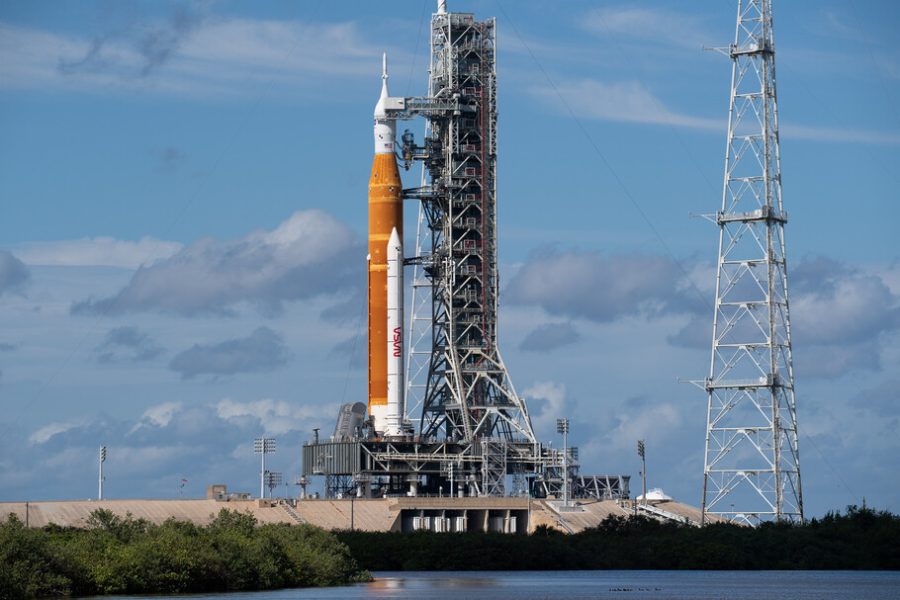
Nasa’s Artemis 1 to pave way for manned Moon missions after 50 yrs
After delays, Artemis 1's uncrewed mission scheduled for launch on Wednesday; success will prompt crewed landing efforts within four years, including a woman, and a person of colour

It has been 50 years since humans last set foot on the Moon. When Apollo 17 commander Eugene Cernan stepped back into the lunar module in December 1972, he felt that astronauts would be there again “not too long into the future.” But his prediction did not come true. Now, Nasa’s Artemis mission is finally expected to set the ball rolling again.
The Artemis 1 test mission, which is scheduled for launch on Wednesday, is unmanned. But if it succeeds, Nasa may make a crewed landing effort within four years with Artemis 3. It is currently scheduled for 2025, but is likely to be delayed by a year.
Also read: NASA’s Artemis 1 mission: Here’s what to expect and why it’s important
Incidentally, the US space agency plans to add a woman’s name to the 12 astronauts in history who have landed on the moon. All of them were members of Apollo missions launched between 1969 and 1972. Not only a women, according to Nasa, the first person of colour may also land on the Moon if things go as planned.
Plagued with delays
“We’re going back to the moon after 50 years, to stay, to learn to work, to create, to develop new technologies and new systems and new spacecraft in order to go to Mars,” Nasa administrator Bill Nelson said in an interview with Newsweek earlier this year.
The Artemis 1 uncrewed mission to the Moon has been delayed several times. Finally, on Friday, Nasa announced the launch after inspecting the minor damage hurricane Nicole caused while passing through Florida.
There is “nothing preventing” a launch on that day, senior Nasa official Jim Free told reporters. He added that Nasa teams gained access to the launch pad on Thursday. The 25.5-day mission is scheduled to launch at 01.04 local time (0604 GMT) on Wednesday, with a window of two hours.
Most powerful rocket ever
The heavy-lift rocket is the most powerful one ever built. It will launch the Orion crew capsule to the Moon without touching down on the lunar surface. According to the plan, the capsule will return to Earth on December 11 by making a splash in the Pacific.
Inside Artemis 1 will be sensor-rigged mannequins called Helga, Zohar, and Moonikin Campos to gauge radiation levels. Soft toy Snoopy and Shaun the Sheep will act as gravity detectors.
Also read: South Korea joins moon rush, launches its first lunar orbiter
“We’re never going to get to Artemis 2 if Artemis 1 isn’t successful,” Free said. Artemis 2, a 10-day interim mission, has been planned for May 2024. It will fly astronauts beyond the Moon without landing. The aim is to test new life-preservation systems and equipment designed for long-duration spaceflights.
Moon to Mars vision
According to Free, a few things still need to be done. Nasa must power up the vehicle and conduct some technical tests. One component on the rocket’s base was possibly damaged and needs to be replaced. Free added that two back-up launch dates have been set for November 19 and 25. The launch has already been postponed thrice in the past few months.
Also read: No plans to take over the moon, says China on NASA allegation
The Artemis mission is just one part Nasa’s Moon to Mars vision. To establish a long-lasting human presence on the Moon, Nasa plans to build a space station in its orbit. That could be a preliminary step towards sending crewed missions to Mars by the mid-2030s.
Among Nasa’s stated goals for the “Artemis generation” are scientific discovery, economic benefits, building a global alliance, and inspiring a new generation of space explorers. However, analysts believe Artemis’s $93 billion price tag, including $4.1 billion for each first launch, may be unsustainable.
(With agency inputs)


